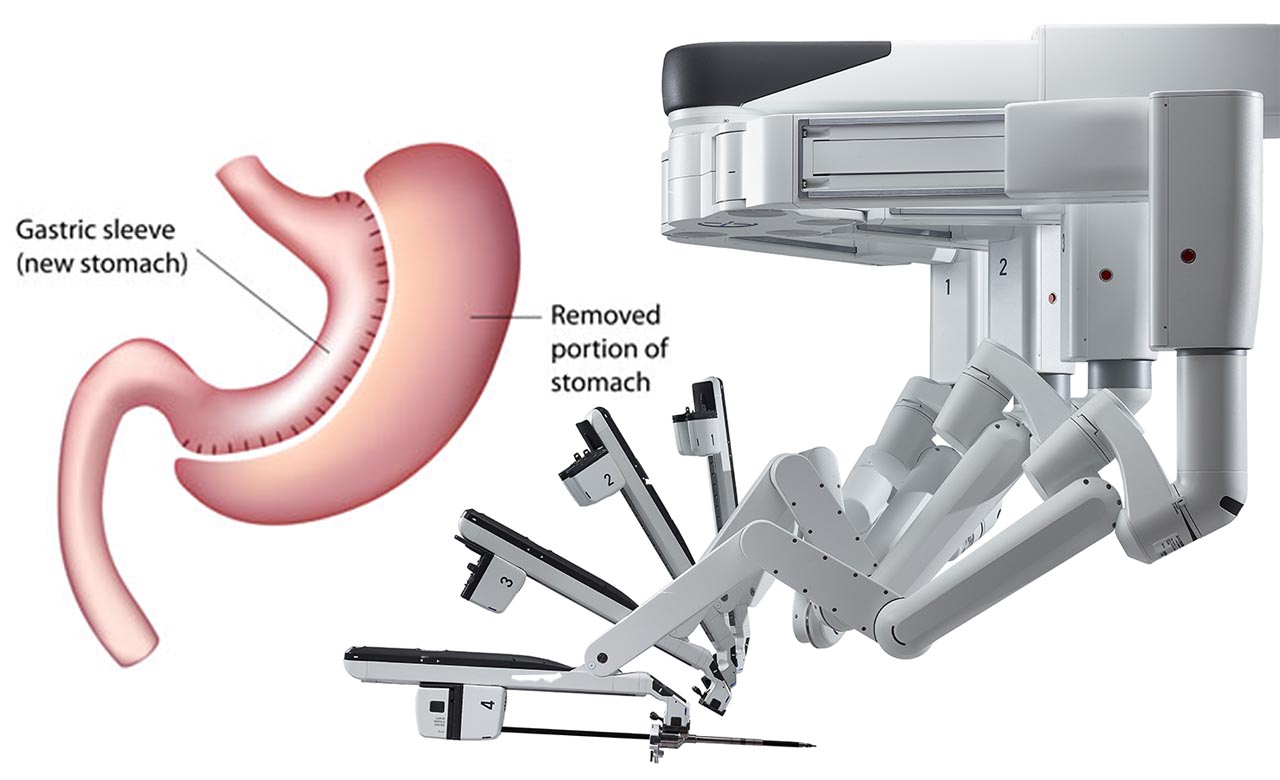ROBOTIC SURGERY
Similarly to laparoscopic operations, during robotic cases the surgeon gains access to the abdominal cavity through small keyhole incisions. Through these small incisions trocars are placed that are thin tubes equipped with a valve system, about the size of a pen. Using a special insufflator device attached to one of the trocars, the abdominal cavity is inflated with carbon dioxide gas to a certain pressure to create a working space. At the end of the surgery or the gas is released from the abdomen. The valve system is necessary to prevent leakage of the gas from the abdomen during surgery.
During laparoscopic surgery the surgeon is working right at the bedside using straight laparoscopic instruments that can be rotated, opened and closed but taking difficult angles outside the straight path of the instruments can be challenging and may put a lot of stress on the operating team during long cases.
Robotic technology evolved to allow instrument movements that are omnidirectional and can directly mimic the movements of the surgeon's wrist. In addition, the surgeon is sitting comfortably at a console a couple of feet away from the patient and he has full control of the camera system that transmits a high definition stereoscopic 3 dimensional image.
The robot does not work independently, it only does what the surgeon does with extremely high precision. The scrub technician can swap instruments and pass sutures according to the surgeon’s immediate needs. Robotic surgery is an advanced form of laparoscopic surgery that allows us to perform very complex procedures in a timely manner with relative ease, while maintaining all the benefits of minimally invasive surgery.
It is important to note that not every operation and case is suitable for robotic or laparoscopic approach.
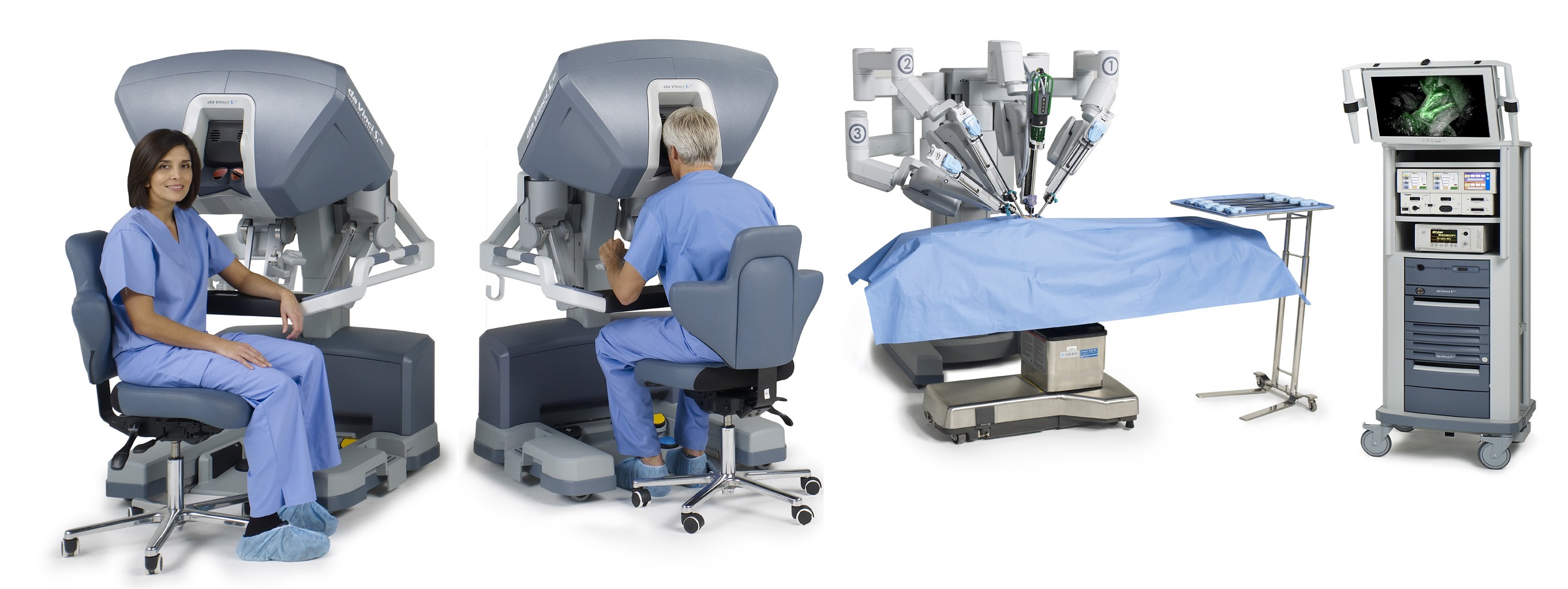
EXAMPLES OF ROBOTIC SURGERY
You can watch examples of robotic surgeries from our library, just click on your selection below:
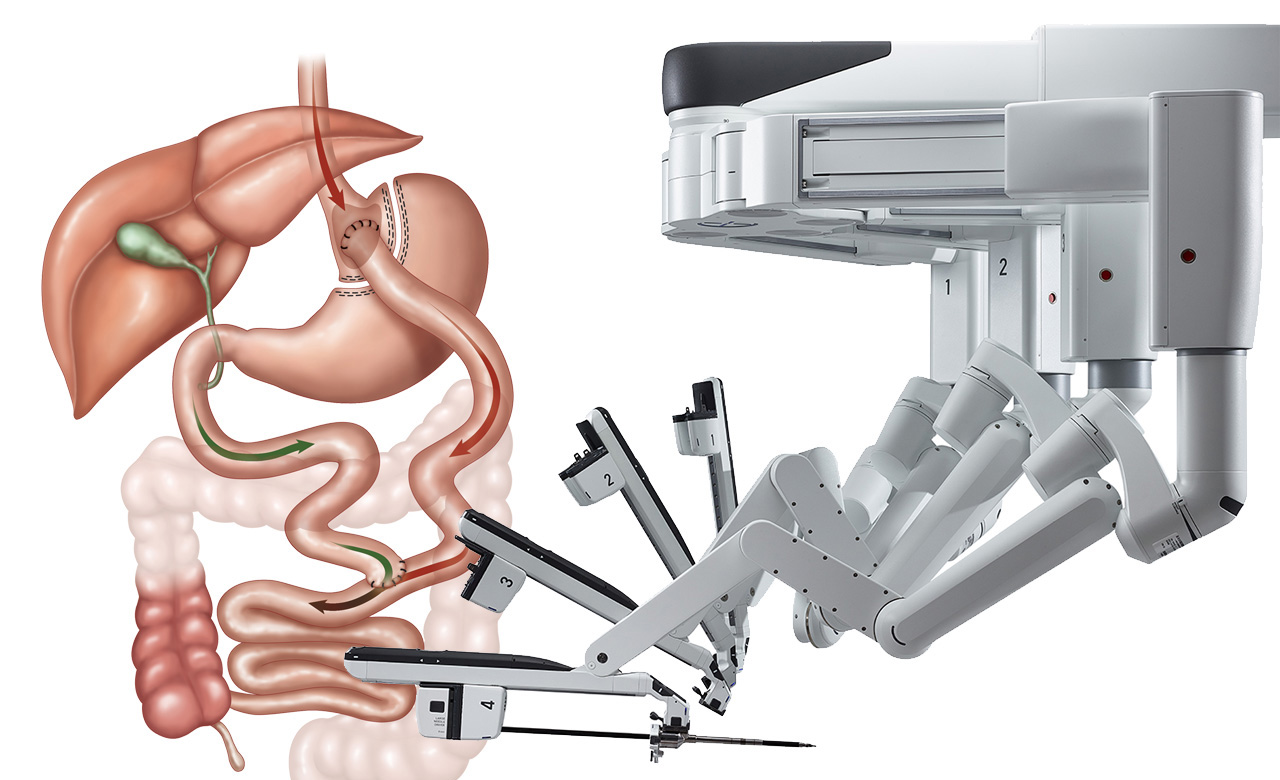
Robotic Gastric Bypass
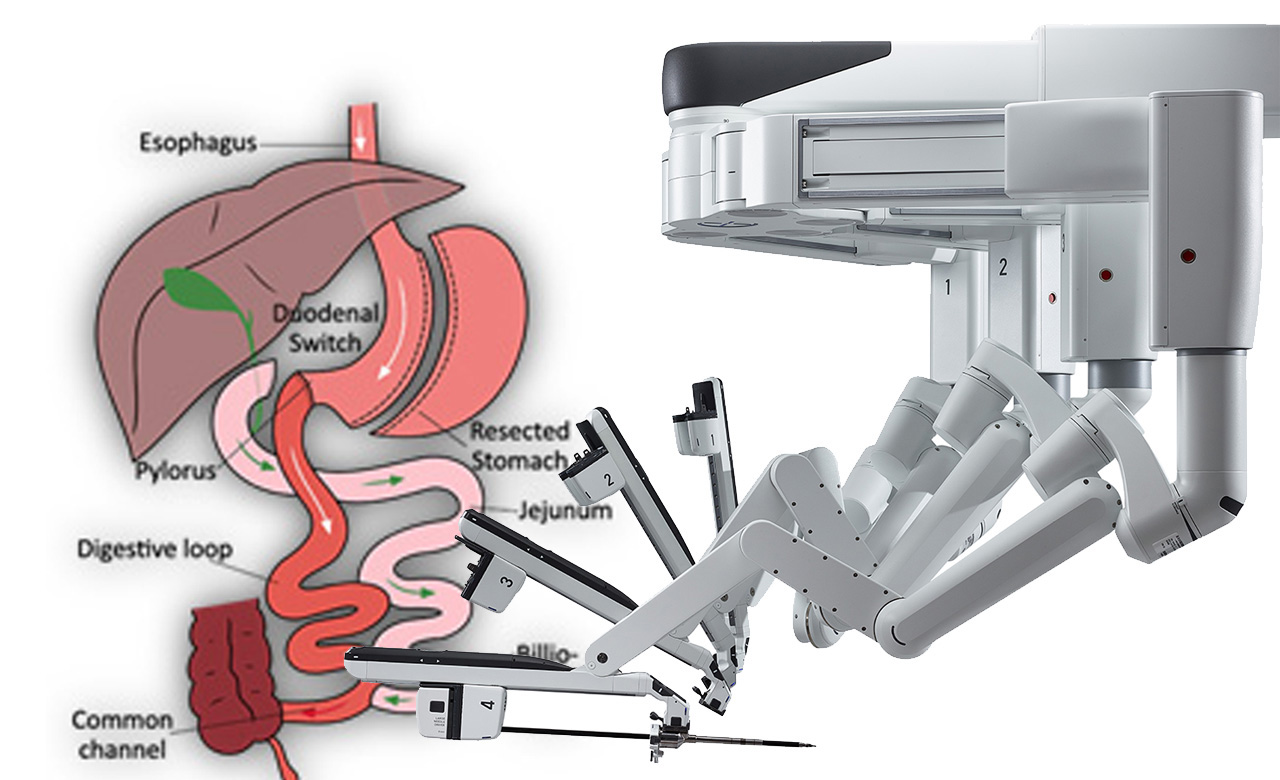
Robotic SADI-S and BPD-DS
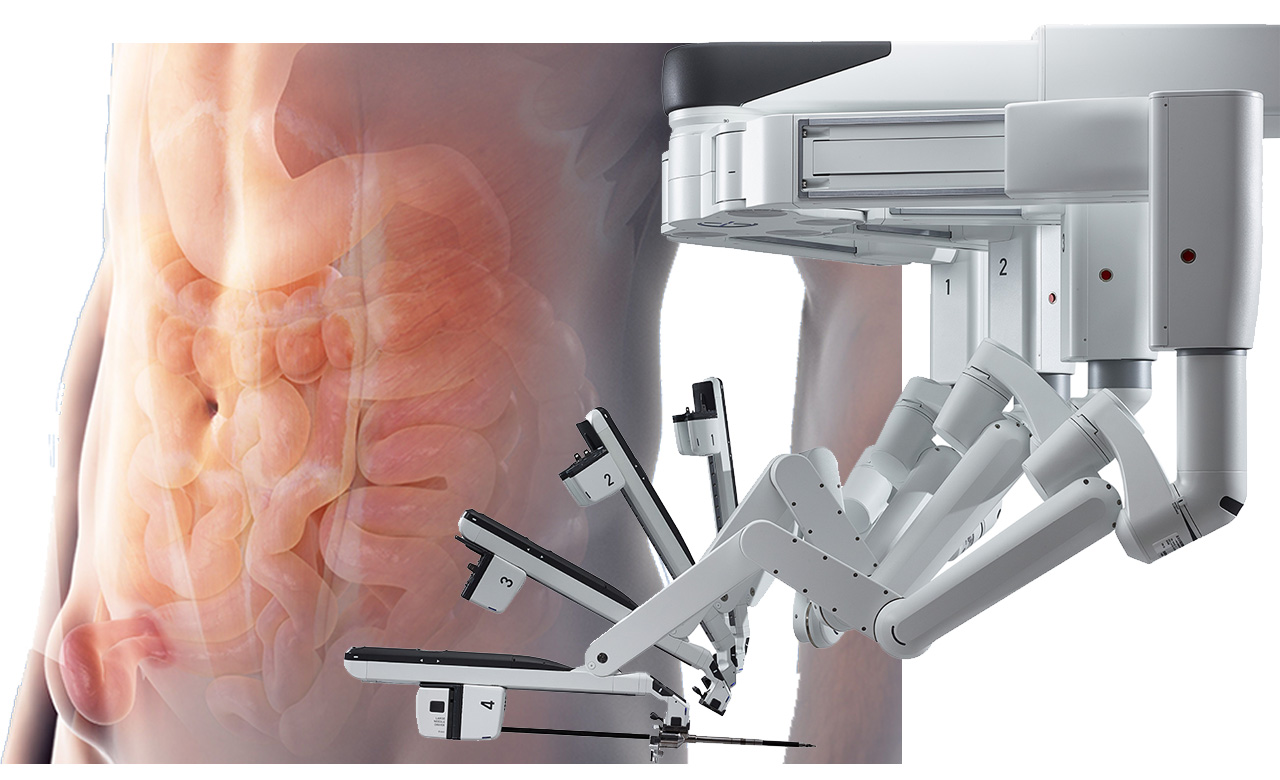
Robotic Inguinal Hernia Repair
HOW LONG HAS ROBOTIC SURGERY BEEN AROUND?
Robotic surgery is basically an advanced form of laparoscopic surgery and it has been evolving for over 30 years. Just imagine how much technological progress we have been experiencing during this time! 30 years ago we just started to use mobile phones, we still had CRT televisions, the internet just started to appear and few of us had emails. The first robots just offered video camera holding and voice control and then with increasing computer power more complex maneuvers became a reality. The systems initially targeted high precision procedures like cardiac surgery and neurosurgery, later the focus gradually shifted to difficult-to-access surgical areas like the deep pelvis and urologists and gynecologists started to recognize the benefits. Perhaps one of the most significant breakthrough was the emergence of robotic prostate surgery that revolutionized urologic surgery with unprecedented improvements in postoperative recovery and morbidity of these operations.
Over the years many companies developed surgical robots but the most successful in the United States remained the DaVinci system by Intuitive Surgical. It is currently the only robotic system in the United States that has FDA approval for general surgical procedures. Their latest robot, the Davinci Xi system addressed many of the limitations of the previous generations and it continues to evolve to help patients and surgeons improving outcomes.
With the advent of AI technology we can expect an exponential improvement in features and performance and the a emergence of novel robotic systems that provide previous unforseen possibilities in treating human disease.
IS ROBOTIC SURGERY SAFE?
Robotic surgery has proven to be very safe, surgeons can only obtain privileges if they undergo rigorous training and proctoring. Many hospitals possess two surgeon consoles per system that allows two surgeons to work at the same time, swapping instruments as needed allowing to learn and teach with excellent control. Our primary hospital (Tufts Medicine MelroseWakefield Hospital) currently has two of the latest Davinci Xi systems and is one of top robotic surgery centers in Massachusetts.
Advanced ROBOTIC/LAPAROSCOPIC Procedures
